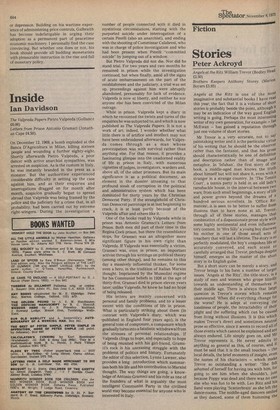Down market
Robert Skidelsky
Money: Whence it Came. Where It Went John Kenneth Galbraith (Andre Deutsch £4.25).
John Kenneth Galbraith is an original and brilliant economist with a gift for popularising his ideas. This has long made him suspect in the academic world, where unreadability and limited sales are commonly held to be proofs of excellence. Both his delightful irreverence and his ability to put difficult concepts in simple and elegant language are much in evidence in this book. The final theme, too, is familiar from his earlier works. It is, briefly, that the growth of corporate power — big businesses and trade unions — has invalidated the conventional wisdom of economics textbooks, demanding the permanent corrective of wage and price controls. What is new to readers of Galbraith is the theme's setting: a history of money.
The question round which the whole book revolves concerns the role of money in economic dynamics. Are changes in the supply of money the cause or consequence of changes in economic activity? This is at the heart of today's debate between the monetarists and their opponents. Galbraith examines the
evidence historically. Not unexpectedly he 'finds against the monetarists: that change in money supply is usually a response to needs and opportunities elsewhere in the economy.
Till the end of the eighteenth century, the most clamant needs were those of govern ments. Governments needed money to fight wars. Since they could not or would not raise it by taxes they either had to create it themselves or (more usually) create banks to do it for them out of their deposits. It was these needs which gave William Paterson the chance to found the Bank of England in 1694 and launched the short, but spectacular, career of John Law and the Banque Royal of France in 1716. Inevitably, the over-enthusiastic creation of money led to the collapse of the issuing authority's currency, but not before economic and/or political activity had been beneficially stimulated. To some it will seem perverse of Galbraith to choose this moment to remind us of the benefits of inflation. His main point is simply that financial wizards are not the creators of economic miracles. They are simply "men in the right places at the right times."
Galbraith's most searching examination is of monetarist claims in the twentieth century. The claim made for the Federal Reserve System and other central banks was that by "managing" the money supply they could even out the dreadful nineteenth century fluctuations in
economic activity. The interwar record disproved it. In America, monetary management
"heightened the boom and accentuated the bust." One problem was the inability to get the timing right. But more important, the underly ing forces in the economy were too strong to be reversed by monetary manipulation. Having reached this conclusion for America, it is disappointing to find Galbraith taking the usual view that an overvalued pound was mainly responsible for Britain's unemployment in the 'twenties. The truth is that no currency management, however skilful, could alone have solved Britain's problems then, or later.
Monetary policy was not finally discredited till the Depression, when it was shown that though banks might make funds available they could not cause them to be borrowed. This was revealed by a remarkable monetary experiment in Roosevelt's first year. Under the influence of the new monetarism of Irving Fisher, the American government tried to engineer reco very by raising the price of gold, thus making available more dollars and more reserves. There was little or no effect on industrial activity. Roosevelt's adviser, Professor George Warren was, Galbraith writes, "one of the first in a long line of monetary reformers extending
to Professor Milton Friedman in our own day who have hoped that their changes would make other and more comprehensive government action unnecessary. They are monetary radicals because they are political conservatives.
The Keynesian Revolution was born out of the failure of interwar monetary policy. As Galbraith puts it: "It became necessary for the government to make spending not permissive but assured. This it did by borrowing and spending itself — by fiscal as opposed to monetary policy." Now after twenty years of peacetime success, fiscal tools have been blunted by the growth of corporate power, leaving us with the grim alternative of inflation or depression. Building on his wartime experience of administering price controls, Galbraith has become indefatigable in urging their adoption as a permanent part of peacetime economic machinery. I personally find the case convincing. But whether one does or not, his book should provide all budding monetarists with pleasurable instruction in the rise and fall of monetary policy.

































 Previous page
Previous page